(382) Special exhibition at MerciMuseum
文字数 3,595文字
I wrote in chapter 346 that in the summer spiritual cleansing ceremonies, instead of the grass ring called "Chinowa", paper dolls or straw dolls are sometimes used.
Impurity and misfortune are transferred to these dolls, which are then thrown into rivers or the sea, or set on fire. Those dolls are called “Katashiro (形代)“, “Hitogata(人形)”, or “Hitokatashiro(人形代)“.
There are 13 indigenous ethnic groups called Orang Asli in Peninsular Malaysia. Among these, the Mah Meri and Jah Hut tribes make carvings.
In the old days, when a Mah Meri man was sick, a spirit appeared to him in a dream and instructed him to make such a statue. The sick man cut a tree and carved a statue in one day while praying.
It is said that people who have had their illnesses cured by the power of spirits have a strong belief in the existence of spirits. This was because they believed that the soul of a person suffering from a bad disease transferred the disease to the sculpture, making it his substitute, and that the sculpture had the same function as a “Katashiro'' or “Hitogata''.
In the 1950s, when the Jah Hut people learned how to use tools such as chisels, knives, hammers, and drills from the British, carvings began to be made in large numbers. In other words, from the 1950s onwards, sculptures have become mass-produced items, rather than unique pieces that are painstakingly created one by one.
Now, when Dad read my diary, ”Chinow Kuguri” (see chapter 346), he remembered that there were some carvings of the Jah Hut tribe in the Merci family's loft, so he took them out.
This is how I came across the carvings of the Jah Hut tribe.
Now, the Merci Museum will hold a special exhibition of sculptures of the Jah Hut tribe, but the carvings of the Merci family’s are also mass-produced and are not possessed by the souls of any evil diseases, so you can view the photos with peace of mind.

① Welcome to the special exhibition “Treasures of the Orang Asli Indigenous People: Sculptures of the Jah Hat Tribe” at the Merci Museum.
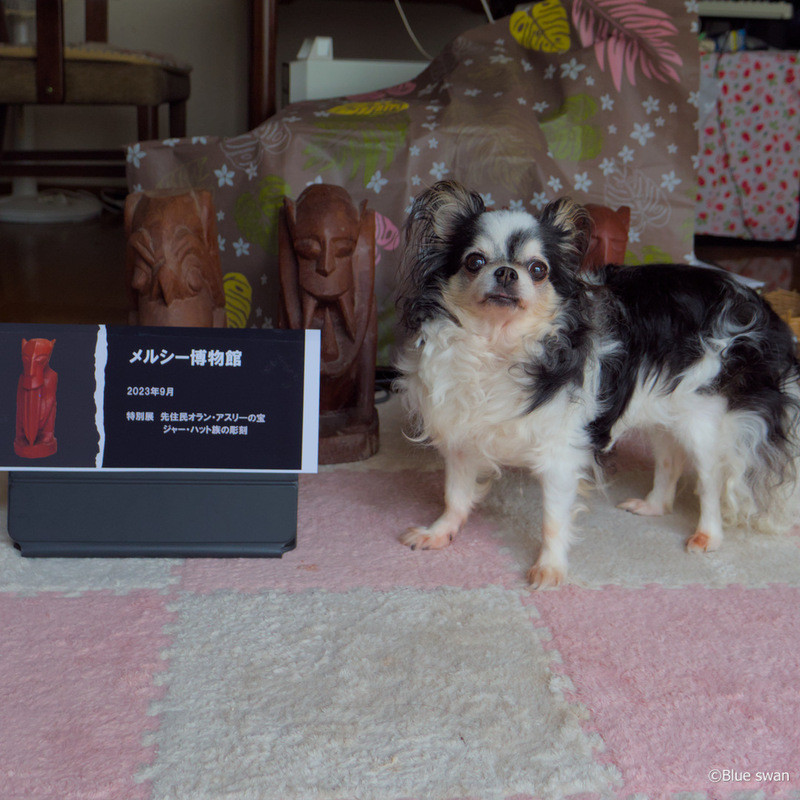
② This is Merci, the director of this museum. Now, I'll show you four carvings of the Jah Hut tribe.
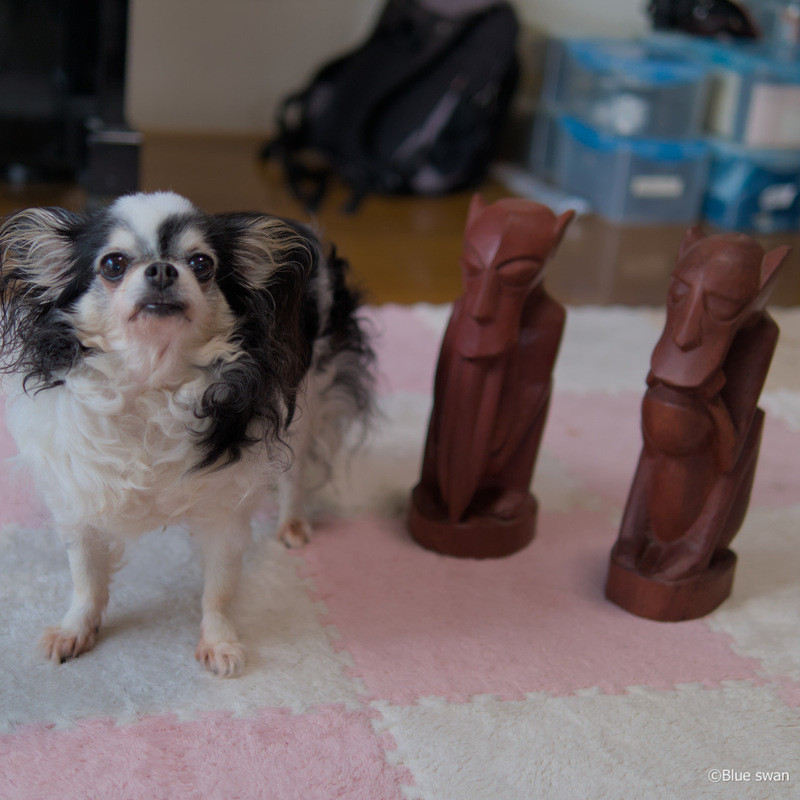
③ First, I'll introduce the two smaller carvings. The title is unknown, as Dad has lost the labels while transporting them from the loft. Look at the shape of their mouths. One is "A"-shaped and the other is "Un"-shaped. "A" is the sound made with the mouth open, and "Un" is the sound made with the mouth closed.
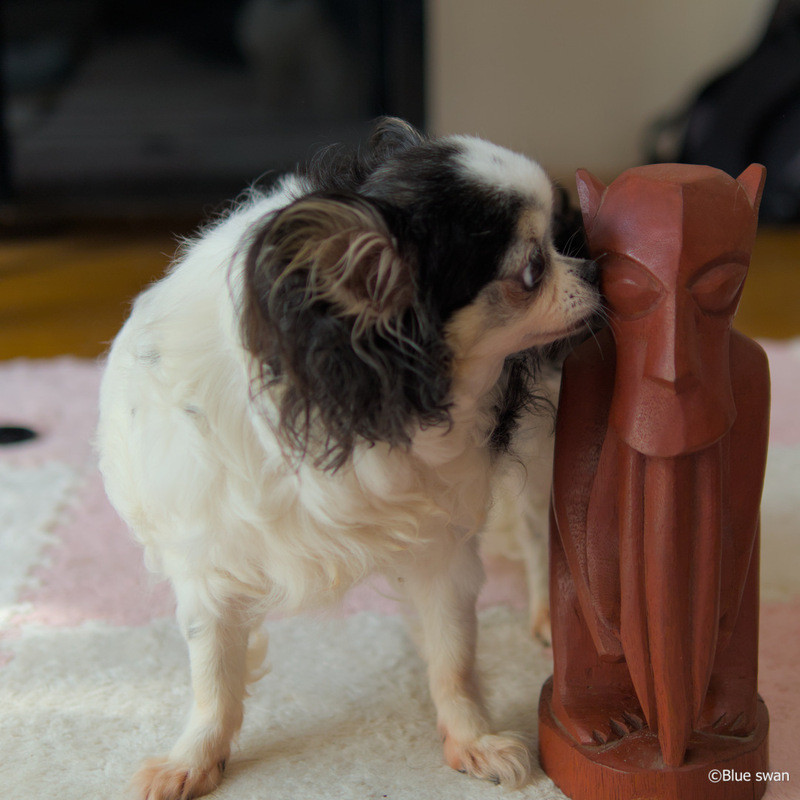
④ This is the long-fanged spirit of the "A"-shaped statue.
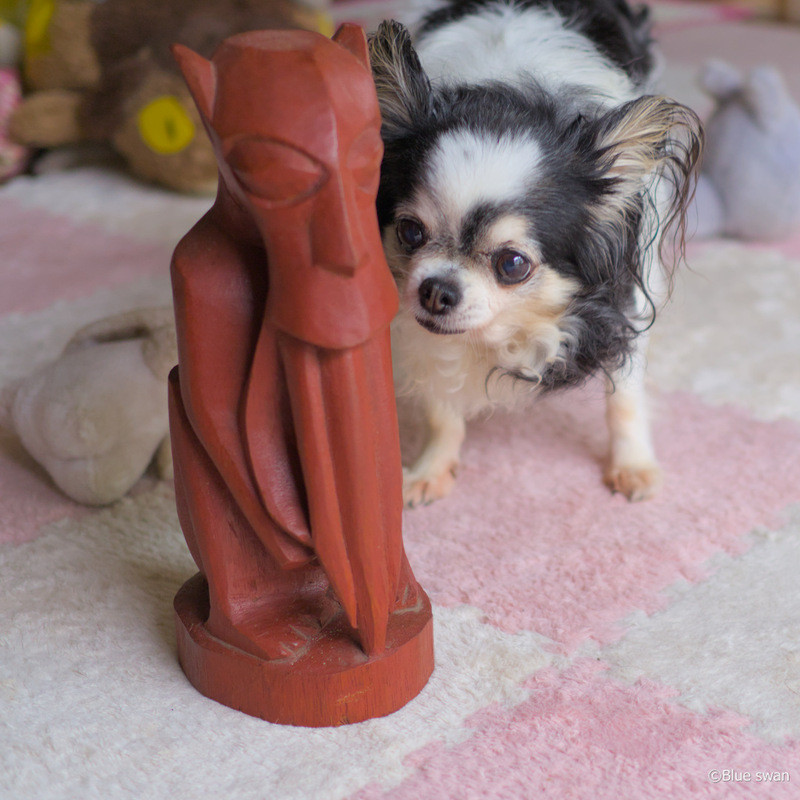
⑤ If you look at it from the side, it's not scary.

⑥ When we stand side by side, the carving is a little shorter than me.
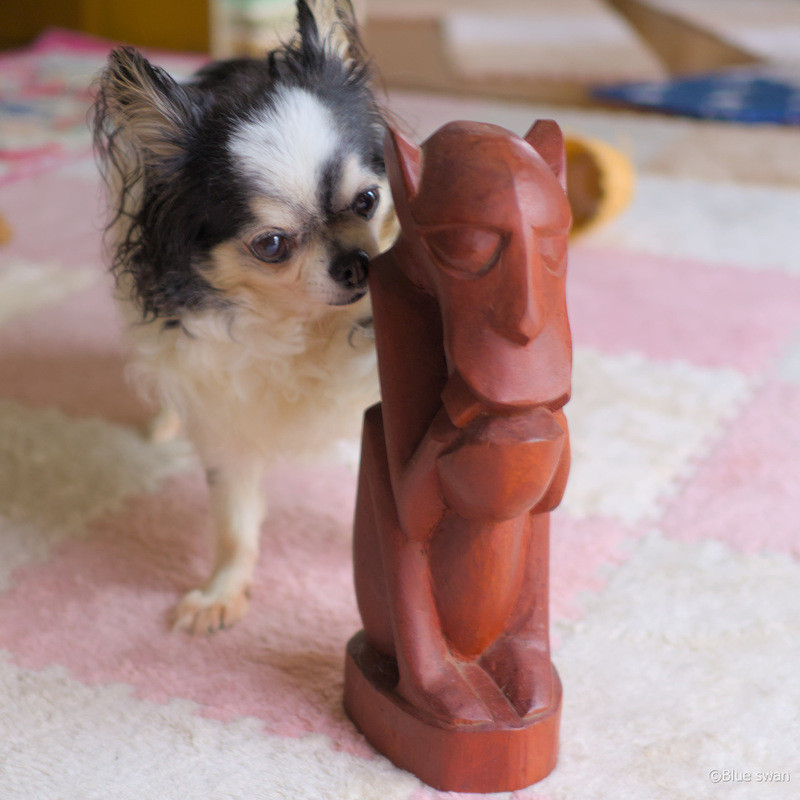
⑦ This is the "Un"-shaped statue. It looks like one of the “Three Monkeys”, “speak no evil”. The “Three Monkeys” are also found in ancient Egypt and Angkor Wat, so it is possible that the Jah Hat people knew about them.
※"The three wise monkeys” are “see no evil, hear no evil, speak no evil”. That means you shouldn’t see, hear, say anything bad.

⑧ Next, I’ll introduce the remaining two large statues. The tags attached to them say, "Spirit of Idleness.”
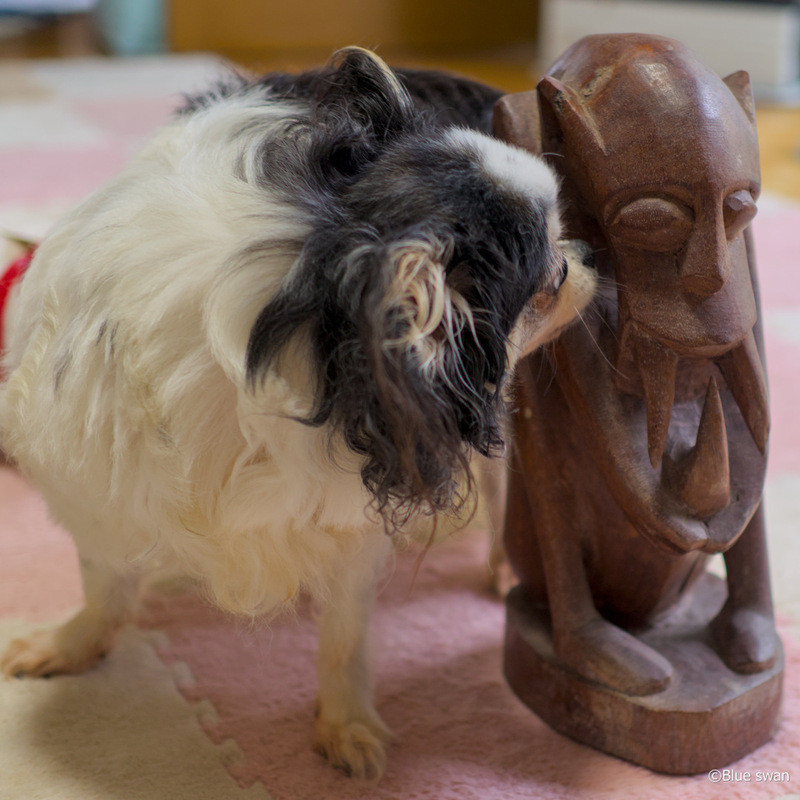
⑨ I'm examining its paws.
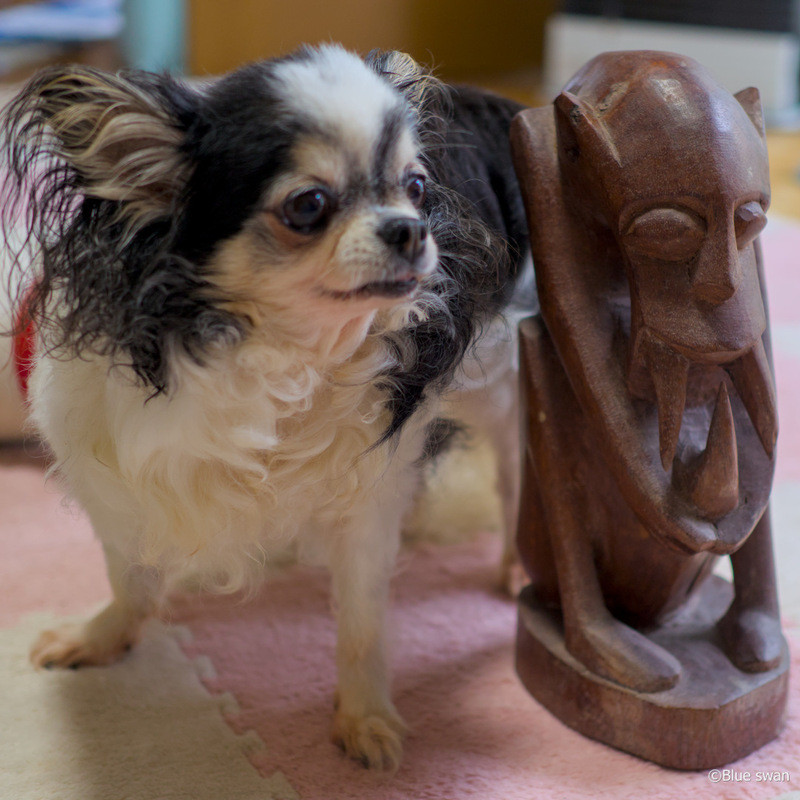
⑩ I am next to the sculpture.
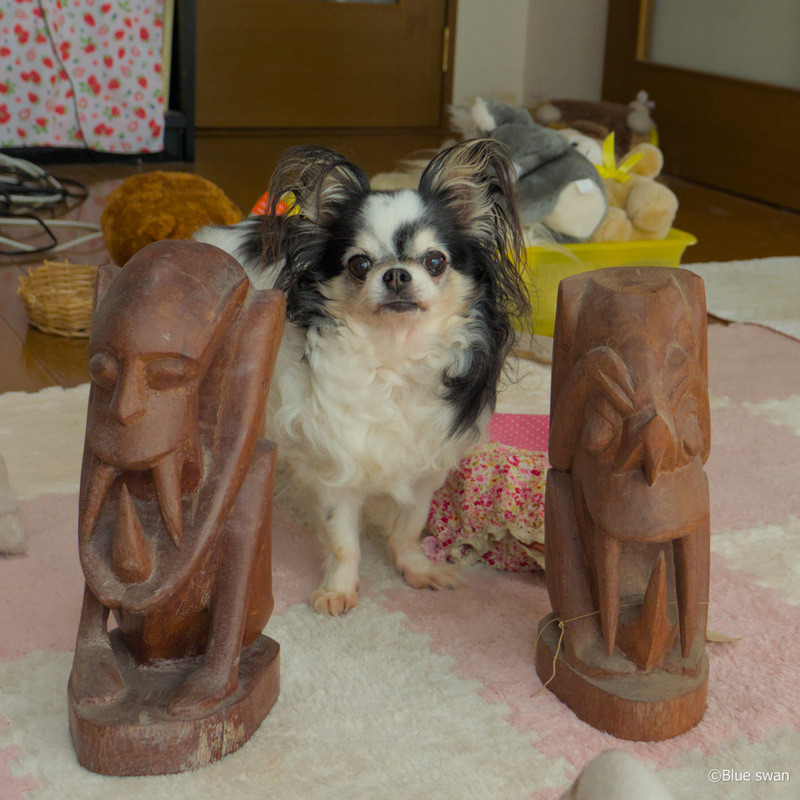
⑪ This time, I'll introduce the two together. The front legs are not visible in the statue on the right.
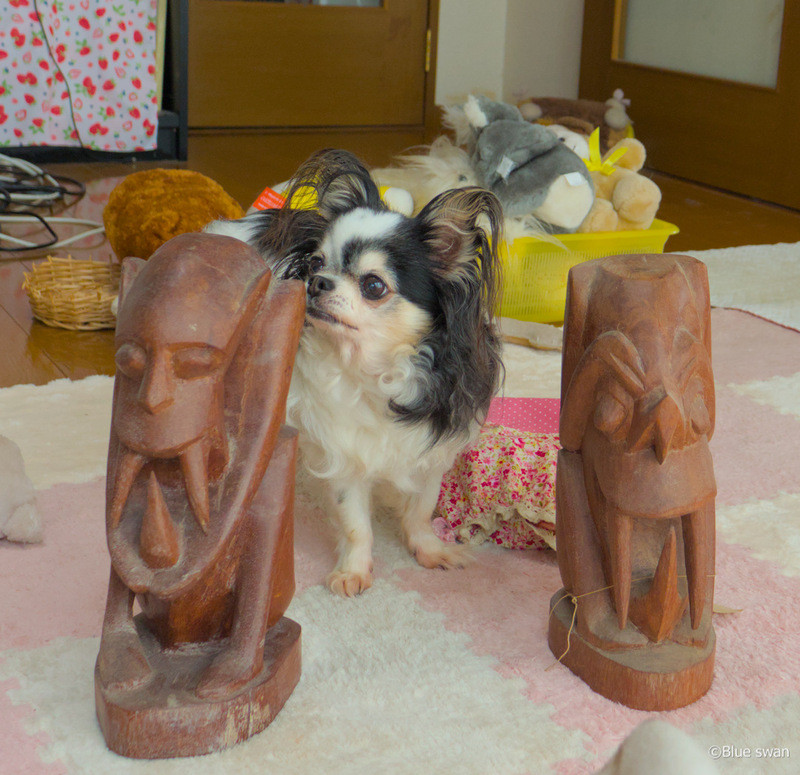
⑫ Compared to the statue on the left, the statue on the right looks angry.
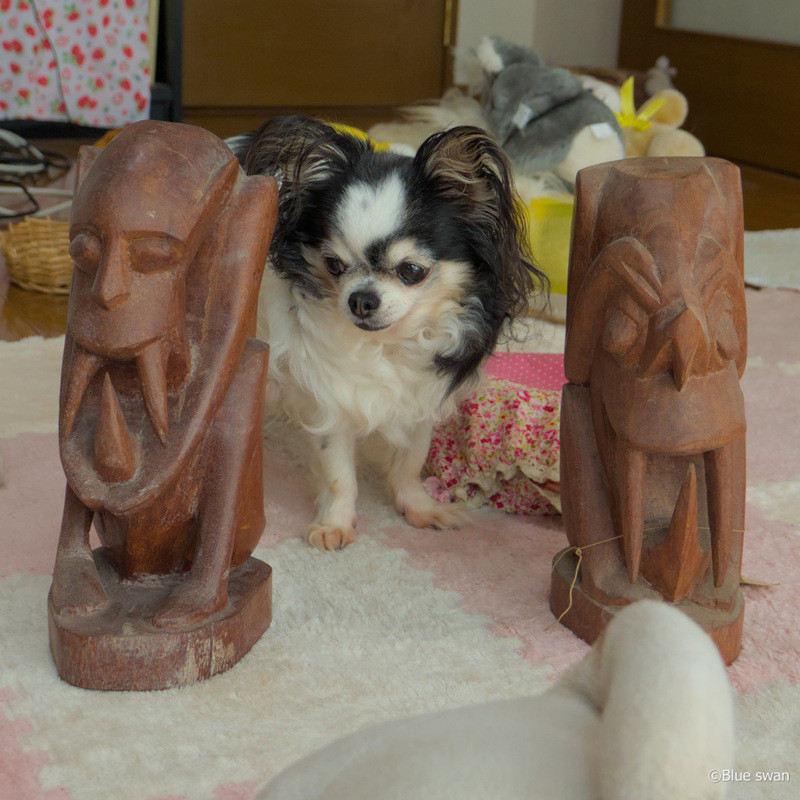
⑬ There is no sign of either of them moving, so there is no danger.
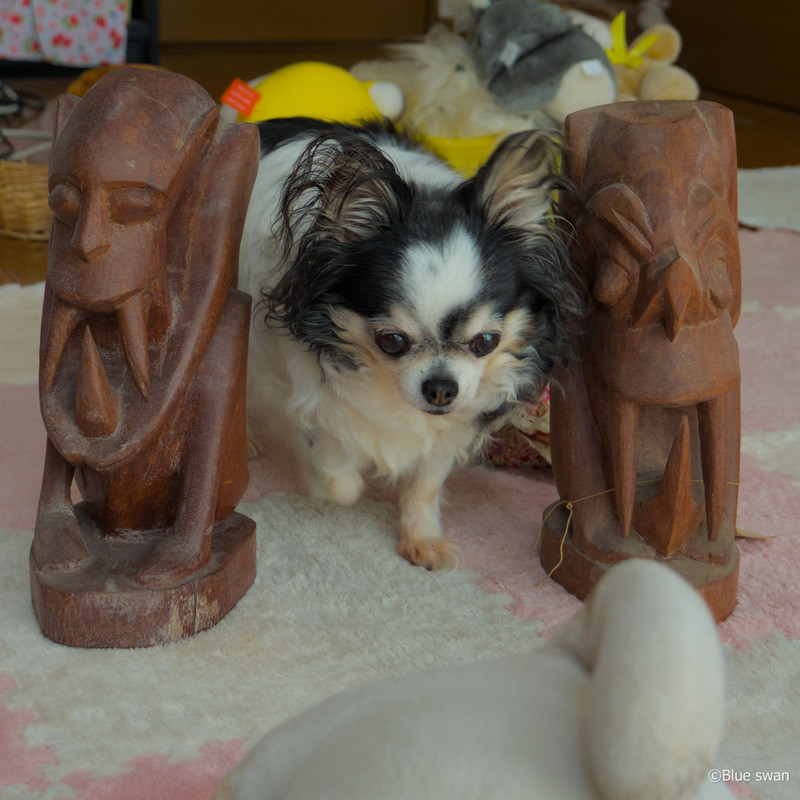
⑭ Now, let's go through the sculptures and move to Dad dog, and let me close the museum for today.
Impurity and misfortune are transferred to these dolls, which are then thrown into rivers or the sea, or set on fire. Those dolls are called “Katashiro (形代)“, “Hitogata(人形)”, or “Hitokatashiro(人形代)“.
There are 13 indigenous ethnic groups called Orang Asli in Peninsular Malaysia. Among these, the Mah Meri and Jah Hut tribes make carvings.
In the old days, when a Mah Meri man was sick, a spirit appeared to him in a dream and instructed him to make such a statue. The sick man cut a tree and carved a statue in one day while praying.
It is said that people who have had their illnesses cured by the power of spirits have a strong belief in the existence of spirits. This was because they believed that the soul of a person suffering from a bad disease transferred the disease to the sculpture, making it his substitute, and that the sculpture had the same function as a “Katashiro'' or “Hitogata''.
In the 1950s, when the Jah Hut people learned how to use tools such as chisels, knives, hammers, and drills from the British, carvings began to be made in large numbers. In other words, from the 1950s onwards, sculptures have become mass-produced items, rather than unique pieces that are painstakingly created one by one.
Now, when Dad read my diary, ”Chinow Kuguri” (see chapter 346), he remembered that there were some carvings of the Jah Hut tribe in the Merci family's loft, so he took them out.
This is how I came across the carvings of the Jah Hut tribe.
Now, the Merci Museum will hold a special exhibition of sculptures of the Jah Hut tribe, but the carvings of the Merci family’s are also mass-produced and are not possessed by the souls of any evil diseases, so you can view the photos with peace of mind.

① Welcome to the special exhibition “Treasures of the Orang Asli Indigenous People: Sculptures of the Jah Hat Tribe” at the Merci Museum.

② This is Merci, the director of this museum. Now, I'll show you four carvings of the Jah Hut tribe.

③ First, I'll introduce the two smaller carvings. The title is unknown, as Dad has lost the labels while transporting them from the loft. Look at the shape of their mouths. One is "A"-shaped and the other is "Un"-shaped. "A" is the sound made with the mouth open, and "Un" is the sound made with the mouth closed.

④ This is the long-fanged spirit of the "A"-shaped statue.

⑤ If you look at it from the side, it's not scary.

⑥ When we stand side by side, the carving is a little shorter than me.

⑦ This is the "Un"-shaped statue. It looks like one of the “Three Monkeys”, “speak no evil”. The “Three Monkeys” are also found in ancient Egypt and Angkor Wat, so it is possible that the Jah Hat people knew about them.
※"The three wise monkeys” are “see no evil, hear no evil, speak no evil”. That means you shouldn’t see, hear, say anything bad.

⑧ Next, I’ll introduce the remaining two large statues. The tags attached to them say, "Spirit of Idleness.”

⑨ I'm examining its paws.

⑩ I am next to the sculpture.

⑪ This time, I'll introduce the two together. The front legs are not visible in the statue on the right.

⑫ Compared to the statue on the left, the statue on the right looks angry.

⑬ There is no sign of either of them moving, so there is no danger.

⑭ Now, let's go through the sculptures and move to Dad dog, and let me close the museum for today.
